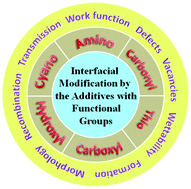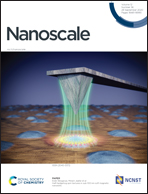Interfacial modification towards highly efficient and stable perovskite solar cells
Abstract
Organic–inorganic perovskite solar cells (PSCs) have attracted tremendous attention due to their high absorption coefficient, high carrier mobility, long diffusion length, and tunable direct bandgap, and their excellent efficiency was boosted to a certified 25.2% efficiency in 2019. However, due to the presence of a high-density of charge traps in perovskite films, plenty of charge recombination occurs at grain boundaries and defects caused by precursor compositions, the process of preparation and crystal growth, thereby restricting the power conversion efficiency (PCE). At present, interfacial modifications by using additives play an important role in various breakthroughs of PSCs. Herein, the effects of various additives with the main types of functional groups, length and spatial configuration of molecules on interfacial modifications in PSCs are reviewed, and their influences on perovskite crystallization and film formation, defect passivation in the bulk and/or at the surface, stabilities of PSCs, and adjusting the interface of structures and energy levels for device performances are also described and summarized. Finally, an outlook of interfacial modifications is provided on the selection and design of efficient additives with respect to the fabrication and development of highly efficient and stable PSCs.

- This article is part of the themed collection: Recent Review Articles


 Please wait while we load your content...
Please wait while we load your content...